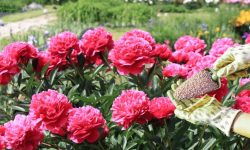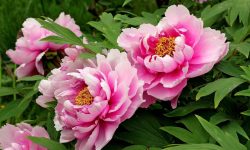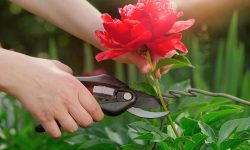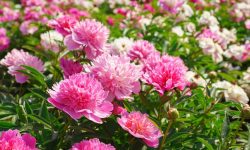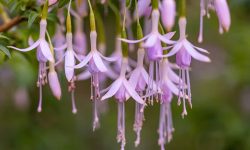Introduction: Why Hydrangeas Deserve a Place in Your Garden
Hydrangeas are among the most beloved flowering shrubs in American gardens—and for good reason. With their large, showy blooms and range of stunning colors from soft blues and purples to vivid pinks and whites, they add timeless charm and structure to any landscape. But as hardy as hydrangeas may seem, keeping them blooming consistently throughout the growing season requires some thoughtful care.
In this comprehensive guide, you’ll learn everything you need to know to grow healthy hydrangeas that reward you with lush, colorful flowers all season long. From choosing the right variety and planting spot to proper watering, feeding, pruning, and troubleshooting, we’ll cover it all.
Understanding Hydrangea Varieties and Their Blooming Habits
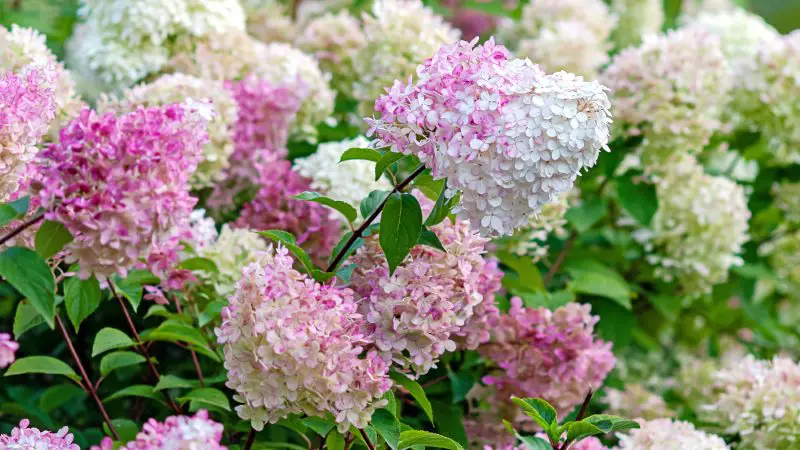
The Main Types of Hydrangeas
In the U.S., gardeners typically grow five main types of hydrangeas. These include bigleaf (Hydrangea macrophylla), panicle (Hydrangea paniculata), smooth (Hydrangea arborescens), oakleaf (Hydrangea quercifolia), and mountain (Hydrangea serrata). Each variety has its own preferences when it comes to sunlight, soil, and climate.
Bigleaf hydrangeas, known for their ability to change color based on soil pH, tend to bloom in early summer and sometimes again in late summer or fall if properly cared for. Panicle hydrangeas are sun-loving and produce large cone-shaped flower clusters from mid to late summer. Smooth hydrangeas thrive in partial shade and typically bloom once in summer. Oakleaf hydrangeas, which offer beautiful foliage in addition to flowers, bloom in early summer and do well in dappled light. Mountain hydrangeas are similar to bigleaf but more cold-tolerant, with delicate lacecap blooms.
Knowing which type you have is essential because care instructions—especially for pruning—differ between varieties.
Choosing the Right Location for Your Hydrangeas
Light Requirements
Hydrangeas generally prefer morning sun and afternoon shade, especially in hot climates. Bigleaf and oakleaf types do best with filtered sunlight, while panicle hydrangeas tolerate and even thrive in full sun. Smooth hydrangeas are versatile and can grow in part shade to full sun depending on the region.
If your hydrangeas receive too much sun, their leaves may scorch and blooms may wilt prematurely. Too little light, however, can lead to fewer flowers and leggy growth. A balanced spot with good airflow and protection from harsh afternoon rays typically produces the most consistent results.
Soil Conditions
Hydrangeas favor well-draining, rich soil with a good amount of organic matter. While they don’t like to sit in soggy soil, they also dislike drying out too quickly. Clay-heavy soils can be amended with compost or peat moss to improve drainage, while sandy soils can be enriched to retain more moisture.
The pH of your soil can also influence bloom color in bigleaf and mountain hydrangeas. Acidic soils (pH below 6) produce blue blooms, while alkaline soils (pH above 7) yield pink. Neutral soils may result in purple or a mix of hues.
Planting Hydrangeas for Long-Term Success
When and How to Plant
Spring and fall are the best times to plant hydrangeas. Avoid planting in the heat of summer, as young plants may struggle to establish.
To plant, dig a hole about twice as wide as the root ball and slightly shallower. Place the hydrangea so the crown (where the stem meets the roots) is level with the surrounding soil. Backfill with amended soil, firm gently, and water thoroughly. Add a layer of mulch to conserve moisture and regulate soil temperature.
Spacing is also critical. Give each plant enough room to mature—typically 3 to 10 feet apart depending on variety. Good air circulation helps prevent diseases such as powdery mildew and leaf spot.
Watering Strategies to Keep Blooms Going
Hydrangeas are thirsty plants, especially during hot summer months. Consistent moisture is key to supporting vigorous growth and flowering.
Newly planted hydrangeas need to be watered deeply several times a week during the first growing season. Mature plants generally do well with one to two deep waterings per week, depending on rainfall and soil type.
Avoid letting the soil dry out completely. If you notice drooping leaves in the morning, that’s a sign the plant needs immediate water. On the other hand, constantly soggy soil can lead to root rot and poor blooming.
Drip irrigation systems or soaker hoses work especially well for hydrangeas, as they deliver water to the roots without wetting the leaves, which helps reduce fungal problems.
Fertilizing for Healthy Growth and Prolific Blooms
Fertilization plays a vital role in hydrangea health and flower production. However, overfeeding can cause lush foliage at the expense of blooms.
In general, hydrangeas benefit from a balanced slow-release fertilizer applied in early spring as new growth emerges. A second, lighter feeding may be done in early summer. Avoid fertilizing after July, as this can encourage soft growth that may not harden off before winter.
If you’re growing bigleaf hydrangeas and want to manipulate bloom color, use soil amendments like aluminum sulfate (for blue) or lime (for pink). But always test your soil first to avoid nutrient imbalances.
Pruning Hydrangeas: When and How to Do It Right
Timing Based on Hydrangea Type
One of the biggest mistakes gardeners make is pruning at the wrong time, which can remove next year’s flower buds. Understanding whether your hydrangea blooms on old wood (last year’s stems), new wood (current year’s growth), or both is essential.
Bigleaf and oakleaf hydrangeas bloom on old wood. Prune immediately after flowering—usually in mid to late summer—if needed for shape or size control.
Smooth and panicle hydrangeas bloom on new wood and can be pruned in late winter or early spring. These types respond well to hard pruning and will still flower beautifully.
Mountain hydrangeas are more delicate but also bloom mostly on old wood. Prune conservatively and only after flowering.
Techniques for Effective Pruning
Always use clean, sharp pruning tools to avoid damaging the plant or introducing disease. Remove any dead, damaged, or diseased wood first. Next, shape the plant by cutting back weak or wayward stems. For rejuvenation, you can remove up to one-third of the oldest stems at ground level each year.
Protecting Hydrangeas Through the Seasons
Mulching and Winter Care
A layer of mulch helps maintain moisture during summer and insulates the roots during winter. Apply 2 to 3 inches of organic mulch such as bark, pine needles, or compost around the base of the plant, but keep it away from the stem.
In colder climates, hydrangeas that bloom on old wood need special protection during winter. Covering them with burlap or creating a frame filled with leaves can help preserve flower buds from freezing temperatures.
Pest and Disease Management
Hydrangeas are generally low-maintenance, but they can be affected by pests like aphids, spider mites, and scale insects. Use insecticidal soap or neem oil if infestations occur. Fungal diseases such as powdery mildew or leaf spot are often caused by poor air circulation or excess moisture on leaves. Water at the base, and avoid overhead watering when possible.
Encouraging Repeat Blooms and Extended Flowering
Some hydrangea varieties, especially newer cultivars like Endless Summer®, are “rebloomers,” meaning they flower on both old and new wood. For these types, consistent care can encourage flowers throughout the season.
Deadheading spent blooms encourages the plant to divert energy into producing new ones. Gently snip off faded flowers just above the next set of leaves without cutting into old wood.
Maintaining consistent watering, feeding on schedule, and protecting the plant from stressors will all contribute to longer bloom cycles.
Common Hydrangea Problems and How to Fix Them
Brown edges on leaves often indicate underwatering or too much sun. Moving the plant or increasing moisture levels usually resolves the issue.
If your hydrangea isn’t blooming at all, it may have been pruned incorrectly or experienced winter damage. It could also be receiving too much nitrogen fertilizer.
Yellowing leaves may suggest poor drainage, root rot, or nutrient deficiency. Assess the soil and improve drainage if needed. You may also need to adjust your fertilization routine.
FAQs About Hydrangea Care
What type of hydrangea do I have, and why does it matter?
Identifying your hydrangea type is essential because each variety has specific needs for light, pruning, and soil conditions. Bigleaf hydrangeas usually have mophead or lacecap flowers and can change color based on soil pH. Panicle hydrangeas form cone-shaped blooms and are more tolerant of full sun. Smooth hydrangeas produce large white blooms on new wood and thrive in partial shade. Oakleaf hydrangeas are recognized by their foliage and early-season blooms. Mountain hydrangeas resemble bigleaf types but are better suited for colder climates. Knowing which one you have allows you to care for it more effectively and avoid mistakes like incorrect pruning.
How do I get my hydrangeas to bloom more often?
To promote continuous blooming, ensure your plant receives consistent moisture, proper sunlight, and balanced fertilization. Deadheading spent flowers can encourage some varieties to produce additional blooms. Reblooming types such as Endless Summer will flower multiple times if given proper care. Avoid overfeeding with nitrogen-rich fertilizer, which may cause lush leaves but few flowers. Also, prune at the right time based on your hydrangea variety to preserve next season’s buds.
Why are my hydrangea leaves turning yellow?
Yellowing leaves can be a symptom of various issues, including overwatering, poor drainage, or nutrient deficiencies. If the soil stays wet for too long, roots may suffocate, leading to chlorosis. Check whether the yellowing is uniform or spotty. Uniform yellowing with green veins could indicate an iron deficiency. Patchy yellowing may point to a nitrogen imbalance. Improving drainage and applying appropriate nutrients based on a soil test can usually resolve the problem.
My hydrangeas aren’t flowering. What went wrong?
Lack of flowering often stems from pruning mistakes, especially on varieties that bloom on old wood. If you cut them back in late fall or early spring, you may have removed the buds for the next season. Cold weather can also damage flower buds on old-wood varieties. Insufficient sunlight may prevent flowering, particularly in panicle or smooth hydrangeas that need more sun. Excessive nitrogen from fertilizers might lead to vigorous leaf growth but no blooms. Lastly, some hydrangeas need a few seasons to mature before they begin blooming consistently.
Can I change the color of my hydrangea flowers?
You can change the flower color of certain types of hydrangeas, specifically bigleaf and mountain varieties. For blue flowers, the soil needs to be acidic with a pH below 6. This can be achieved by adding aluminum sulfate. For pink flowers, alkaline soil with a pH above 7 is required, and garden lime can be used to raise the pH. Color changes won’t happen overnight and require consistent treatment and monitoring of soil conditions. White hydrangeas will not change color regardless of soil pH.
When and how should I prune my hydrangeas?
The timing and method of pruning depend entirely on whether your hydrangeas bloom on old wood or new wood. For old wood bloomers like bigleaf and oakleaf hydrangeas, prune immediately after flowering ends, typically in midsummer. For new wood bloomers such as panicle and smooth hydrangeas, pruning should be done in late winter or early spring before new growth begins. Use sharp, clean tools and avoid cutting into areas that will produce next year’s blooms. If unsure, it’s safer to limit pruning to dead or damaged stems.
How much sunlight do hydrangeas need?
Most hydrangeas prefer a mix of sunlight and shade. Morning sun followed by afternoon shade is ideal, especially in hotter regions. Bigleaf and oakleaf hydrangeas thrive in filtered light and may wilt or burn under full sun. Panicle hydrangeas are more tolerant of sun and can flourish in full sunlight with adequate water. Smooth hydrangeas are flexible and do well in a range of light conditions but tend to bloom best when given several hours of direct sunlight. Too much shade can result in leggy growth and fewer flowers.
Should I deadhead hydrangeas?
Deadheading hydrangeas helps maintain a tidy appearance and can encourage more blooms in varieties that rebloom. Use clean pruning shears to snip off faded blooms just above a pair of healthy leaves. Be careful not to cut into developing buds, especially on types that flower on old wood. While deadheading doesn’t guarantee more flowers for every hydrangea, it does promote stronger growth and allows the plant to redirect energy into new shoots and roots.
How often should I water my hydrangeas?
Hydrangeas require consistent and deep watering, particularly during hot or dry weather. Most established hydrangeas do well with a thorough watering once or twice a week. Newly planted shrubs need more frequent attention until their roots are well established. The goal is to keep the soil evenly moist, not soggy. Early morning is the best time to water, allowing foliage to dry by nightfall. Using drip irrigation or soaker hoses helps deliver moisture to the root zone while minimizing fungal issues on the leaves.
How can I protect my hydrangeas from winter damage?
In colder climates, protecting your hydrangeas during winter is essential—especially for those that bloom on old wood. Begin by applying a thick layer of mulch around the base of the plant in late fall to insulate the roots. For extra protection, wrap the entire plant with burlap or build a frame filled with straw or leaves around it. Avoid pruning in fall, as this can expose tender buds to frost damage. In warmer zones, minimal protection is needed, but a winter mulch still helps regulate soil temperature.
Can hydrangeas grow in pots?
Hydrangeas can grow successfully in containers, especially compact or dwarf varieties. Choose a large pot with drainage holes and fill it with a high-quality potting mix that retains moisture but drains well. Potted hydrangeas require more frequent watering than those in the ground, particularly during the summer. Fertilize regularly during the growing season, and move containers to a protected area in winter to avoid root freeze. With the right care, hydrangeas in pots can be just as showy and long-lasting as those planted in garden beds.
How long do hydrangeas bloom?
The bloom period of hydrangeas varies depending on the variety and local climate. Bigleaf hydrangeas often begin blooming in early summer and can continue into late summer, especially if they’re reblooming types. Panicle hydrangeas typically start flowering in midsummer and extend into early fall. Smooth hydrangeas bloom from early to mid-summer, while oakleaf varieties tend to bloom in early summer. Providing consistent moisture, proper pruning, and deadheading will help extend the blooming period for most types.
Conclusion: With Consistent Care, Hydrangeas Will Reward You All Season
Hydrangeas may be one of the most rewarding plants in any garden when given the proper care. Understanding your variety, planting them in the right spot, providing consistent water and nutrients, and timing your pruning correctly will go a long way in ensuring a spectacular bloom display year after year.
With attention to detail and a little seasonal maintenance, your hydrangeas will flourish from spring to fall—adding vibrant color, texture, and joy to your landscape all season long.

